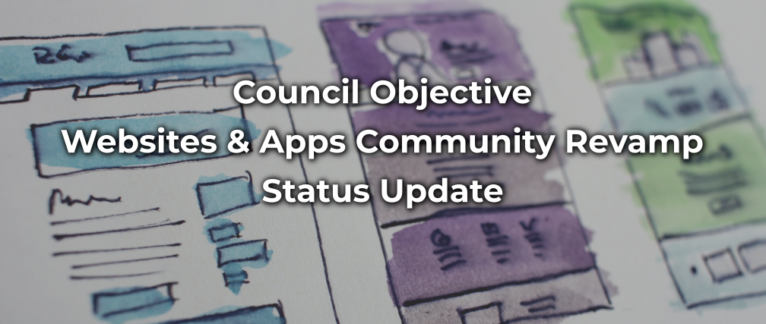Wrapping up the Fedora Websites and Apps Community Initiative: Part I
The article highlights the success of the Fedora Websites and Apps Community Initiative, starting with a small team and growing into a larger, well-coordinated effort. It outlines the challenges faced, the support from Fedora leaders, and the involvement of volunteers.

With the Fedora Websites 3.0 out alongside the release of Fedora Linux 38 and the redevelopment of Fedora Badges in full swing, it could not have been a better time than now to close the community initiative as a success. Let’s look back at how far we came from where we started. This is the first in a series of five posts detailing the journey of Fedora Websites and Apps Community Initiative, those who were involved in making it a grand success, and what lies ahead for the team.
Coming together
One winter (Indian) night in December 2020, a biotechnology researcher, a veteran free and open-source software contributor, a high school student, and a final-year college student got on a video call from across the world. Being impressed by the successes around infrastructure applications, the latter two were pulling off within the community and the positive effect that came with it, the veteran contributor decided to bring together a team of enthusiastic individuals who would be willing to redevelop a project about aggregating community meeting minutes. Let me tell you this was the unlikeliest group you would have ever laid your eyes on, but they did pack a punch when it came to coming together and creating something magnificent.
It started off slow-paced. As time went on and smaller successes started rolling in, the biotechnology researcher thought that this small ensemble could help make a lot bigger dent in our web representation. Instead of limiting our efforts to one small application, we could formalize to be a special interest group or a subteam.
Introducing the team
These four folks were Ramya Parimi, Justin W. Flory, Nasir Hussain and me, respectively from the first line. We were partaking in what we scarcely imagined would end up turning out to be a successful community initiative after a period of almost two and a half years. As proposed by Justin W. Flory, we started by calling ourselves the Fedora DevOps SIG and documenting a charter of who we are and what we are supposed to do, around February 2021.
That, of course, got swiftly wiped off the slate as we were seemingly jumping at the deep end with this one and with no documented bounds to our remit — we had huge overlaps with other community teams such as Fedora Docs and Fedora Infrastructure. At around the same time, we were proposed by then-FCAIC, Marie Nordin to come up with a community initiative proposal. This was much more than just the websites and applications that needed attention. The team itself needed a revival after all the time spent dormant and without a set of processes.
Creating an Initiative
For a group consisting mostly of inexperienced newcomers, this all sure looked like a lot of shiny stuff to participate in and during peak COVID-19 times when we were all restricted to our homes, this most definitely looked like the right use of our vacant time. I am not going to lie – at around April 2021, writing a Fedora Council objective statement with a driving mission and vision, a well-defined set of outcomes to achieve and outputs to deliver, and activities to get involved in did overwhelm us in the beginning.
To this date, I still think of what we would have ended up accomplishing if it were not for Matthew Miller, our Fedora Project Leader who helped us out with the shift-left approach of the logic model and Ben Cotton, our Fedora Program Manager who helped us keep a realism check on what we ended up committing. With a shiny logic model diagram made by Marie Nordin, we were set to propose a Fedora Council objective for revamping our existing websites team by growing in capacity and including our community applications under our remit – which was met with universal approval by the Fedora Council.
Getting started
Now that the efforts became formalized within the community, we began with creating communication channels. We picked the appropriate tools/workflows for our purposes and documented roles and responsibilities of the team members. For a volunteer team of four people, it sure was a lot on the plate. Thankfully, around June 2021 we were joined by a bunch of others — both newcomers and experienced folks alike — who wanted to help us with our efforts.
Folks like Francois Andrieu, Michael Scherer, Sayak Sarkar, Sayan Chowdhury, Ashlyn Knox, Mairin Duffy, Petr Bokoc, Jan Kuparinen, Onuralp Sezer, and many others gladly came in to volunteer and mentor the team respectively. Onuralp Sezer and Nasir Hussain set up our official Telegram group bridged with the official #fedora-websites IRC channel and Ramya Parimi and I looked into setting up our official Taiga kanban board for organizing our goals with Justin W. Flory’s help. This was also around the time when I joined as an Associate Software Engineer in Red Hat’s Community Platform Engineering team.
This will be followed by the “Wrapping up the Fedora Websites and Apps Community Initiative: Part II” post.
This article was originally posted on Fedora Commblog on 02 May 2023.